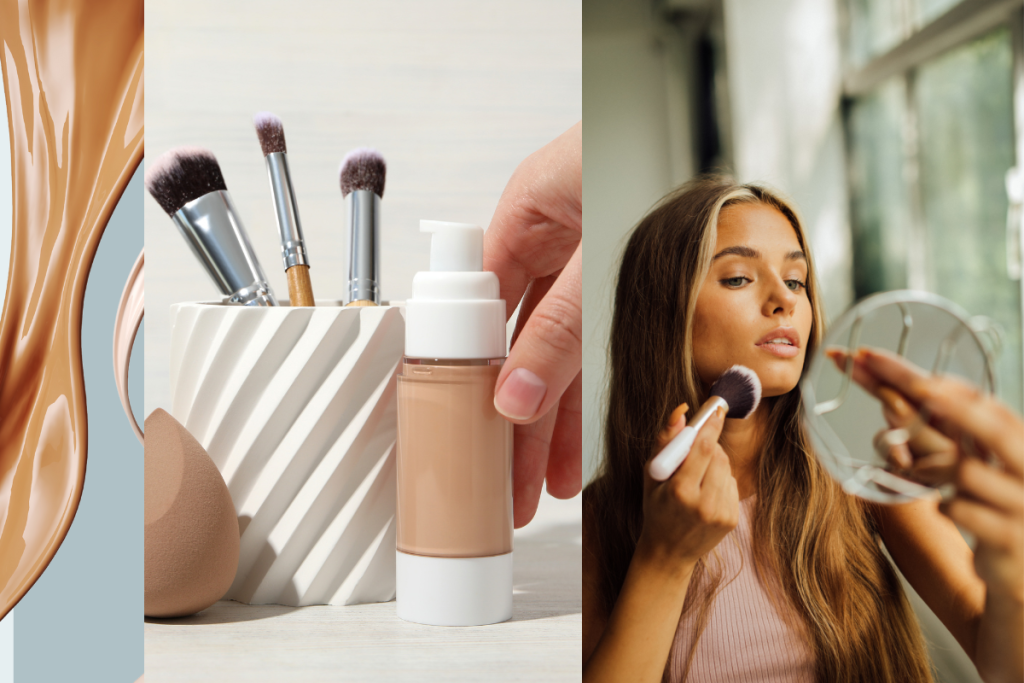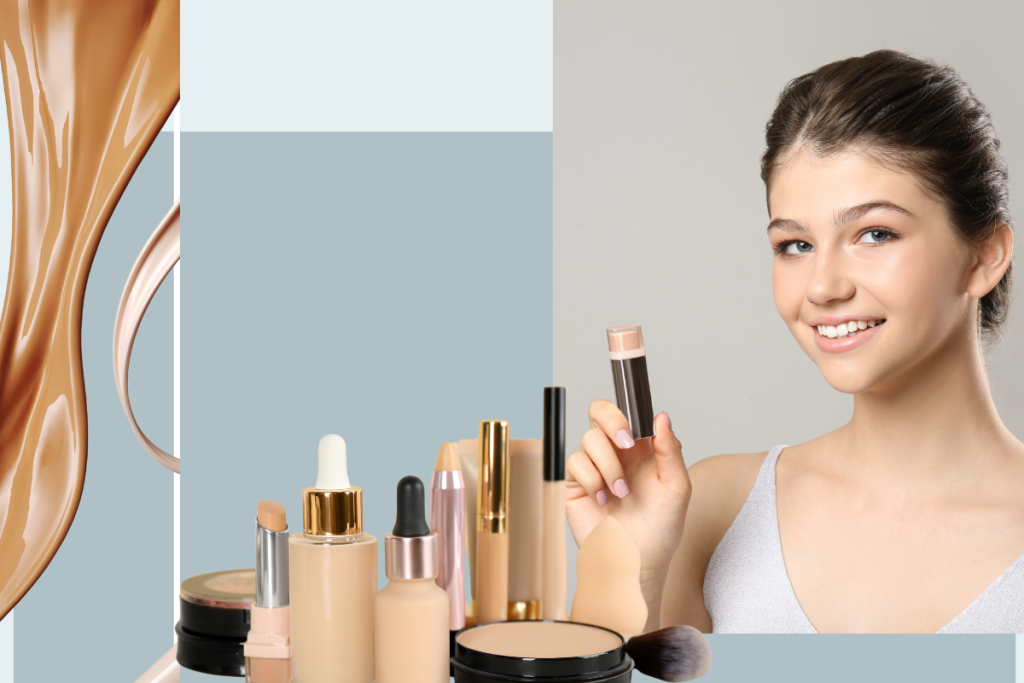Finding the best foundation shade is important for perfect your foundation application.The right foundation will enhance your natural look, even out your skin, and create a smooth base for makeup. There are many shades to choose from, finding the right one can be hard. with the right tips, you can pick the perfect match,Fortunately, this guide will make the process easier for you.
Now No More Mismatch
Now, many people have a face that looks too light or too dark.one will think, the shade of foundation doesn’t match with their skin, making it look unreal. The first step to the right shade is understanding your skin: its type, undertone, and coverage needs. This is what keeps you from having mismatched foundation and gives you a seamless, natural finish.
What Is the Process for Selecting the Right Foundation?
1. Know Your Skin Type

when you choose a foundation, you should know your skin type. Foundations are made differently for different needs of the skin:
Oily Skin: Go for oil-free, mattifying, or powder foundations that would control excess shine.
Dry Skin: for hydrating or dewy-finish foundations with moisturizing ingredients.
Combination Skin: A balanced formula gives hydration controlling oil in the T-zone.
Sensitive Skin: Fragrance-free, hypoallergenic, and dermatologist-tested formulas prevent irritation.
2. Determine Your Skin Undertone
Your skin undertone is the key to finding the correct foundation color. Everyone’s skin undertone falls under one of three groups:
Cool Undertones: Skin has a pink, red, or blue undertone. You tend to get burned when sunbathing.
Warm Undertones: Skin has golden, yellow, or peach undertones. You tan easily, hardly ever getting burned.
Neutral undertones: The combination of warm and cool tones makes it easier to find a match.
To determine your undertone, try these simple tests:
check your veins: if they appear blue or purple, then you have cool undertones, but if they appear green, your undertone is warm.
observe how your skin reacts to the sun; if it tans easily, then you may have a warm undertone, whereas if it burns quickly, then you most likely have cool undertones.
3. Select the Right Coverage Level
Foundations come in different coverage levels, so choose one base on your preference and skin concerns:
Sheer Coverage: Light, natural finish; ideal for even skin tones with minimal imperfections.
Medium Coverage: Balances a natural look while covering minor blemishes and redness.
Full Coverage: Provides maximum coverage for acne scars, pigmentation, or uneven skin tone.
4. Test Shades on Your Jawline

When testing foundations, the jawline is the best area to test rather than the hand or wrist. The jawline gives a better indication of how much blending is going to occur between your face and your neck. Pick a few shades closest to your skin and compare them in natural daylight. The shade that disappears into your skin seamlessly is the perfect match.
5. Skin Care Issues
Your foundation should help with your individual skin care concerns:
Acne-prone skin: Non-comedogenic formula that does not clog pores.
Dull skin: Brightening foundations, containing Vitamin C, can be very radiant.
Aging skin: Hydrating and anti-aging formulas can give the face a bright, youthful appearance.
6. Formula

The right formula will make all the difference in your overall look and how long the makeup lasts on your face:
Liquid Foundation: Versatile and suitable for all skin types; offers different finishes (matte, dewy, satin).
Powder Foundation: Good for oily skin; gives a light, natural finish.
Stick Foundation: Provides heavy coverage and is easy to use for quick touch-ups.
Serum Foundation: Lightweight and hydrating; ideal for dry or mature skin.
Tinted Moisturizer/BB Cream: A sheer alternative for a natural, everyday look.
7. Try-On Wear Time
Before settling on a foundation, test its longevity. Apply the foundation in the morning and observe how it wears throughout the day.
Consider:
Does it oxidize (change color)?
Does it break apart, settle into fine lines, or get oily?
Does it last through humidity and daily activities?
A foundation that remains fresh for several hours without major issues is the best choice.
8. Use the Right Application Tools

The technique used in applying your foundation will determine the final appearance. Select the proper applicator for a smooth appearance:
Brush: Creates full coverage and distributes liquid foundations without streaking.
Sponge: Presses foundation into the skin to give a natural, airbrushed appearance.
Fingertips: Great for light textures like BB creams and tinted moisturizers.
Conclusion
It does not have to be a difficult task to choose the right foundation shade. You can determine the perfect foundation by knowing your skin type, undertone, and coverage needs. Always test multiple shades, check the formula, and observe how it wears throughout the day to ensure the best match. With the right foundation, you will achieve a flawless complexion and confidence in your makeup routine.
